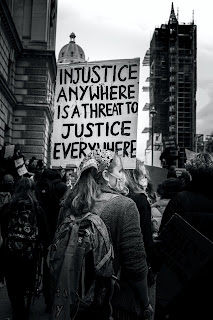Day 77 – A critical stance
 |
| Photo by Towfiqu barbhuiya on Unsplash |
So, bear with me as I keep writing and thinking off the top of my head! The ideas I wrote yesterday may show up again here today, but they are certain to be shaped a bit differently, and certainly won’t be the same. What’s your experience of writing like this?
I’m starting to prepare for returning to teaching (I will teach three courses this summer – Orientation, the introductory workshop for the year-long course Expressive Arts Therapy Supervision II/iii – for students doing their second field placement, and Principles and Practices of Expressive Arts Therapy). I’m super excited – really eager to be back in the classroom with students and to be testing out my work over sabbatical on “engaged pedagogy.”
bell hooks (2010) describes engaged pedagogy in her book Teaching Critical Thinking. In the first essay “Critical thinking,” hooks (2010) describes the way children are natural critical thinkers – they ask the big questions: who, what, where, when, how, and why. hooks (2010) encourages us to tap into our young, child-like, inquisitive nature. She asks us to remember our passion for thinking big – and for enjoying the process of wondering. She laments the process by which many of us are taught that thinking is “dangerous” – and that many of us are taught not to trust our questioning nature because of the discomfort and change both the questions and the answers might cause the grown-ups around us. She says most of us “learn to suppress the memory of thinking as a passionate, pleasurable activity” (p. 8).
She goes on to talk about the importance of thinking about thinking as well – “it is a way of approaching ideas that aims to understand core, underlying truths, not simply that superficial trust that may be more obviously visible” (p. 9). Of course, once we start talking about truth, we must recognize that in the 21st century we recognize that knowledge is “socially constructed” and that the “truth” depends on where you sit!
Here we come to the DiAngelo and Sensoy (2014) reading for Orientation. Their essay begins,
If you are reading this essay, you are likely enrolled in a course that takes a critical
stance. By critical stance we mean those academic fields (including social justice, critical
pedagogy, multicultural education, anti-racist, postcolonial, and feminist approaches) that operate from the perspective that knowledge is socially constructed and that education is a political project embedded within a network of social institutions that reproduce inequality.
Not only am I teaching from an assumption of socially-constructed knowledge, but I do also believe that “education is a political project embedded within a network of social institutions that reproduce inequality.” The question of who, what, where, when, how, and why the arts might be helpful is one we need to be asking with openness and curiosity. The question of who, what, where, when, how, and why someone has come to need help is an important question not just for us – but more importantly for them. How do they understand it?
There are more – but I want to save some thoughts for my entries for Day 78 and 79, which I will also do today!
DiAngelo, R., & Sensoy, Ö. (2014). Leaning in: A student’s guide to engaging constructively with social justice content. Radical Pedagogy, 11(1), 1-15. https://robindiangelo.com/wp-content/articles/rad-ped-leaning-in.pdf
hooks, b. (2010). Teaching critical thinking: Practical wisdom. Routledge.



Comments